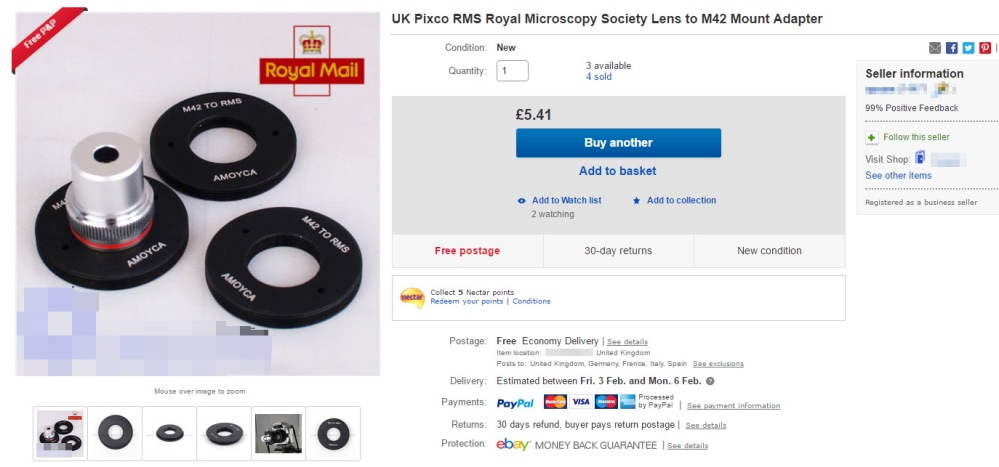During a clear out at work, we stumbled upon an old microscope. It had two lenses, a 10x and a 40x optic, which I thought might be fun to experiment with, just to see if it may be possible to take images with them on my camera.
I did a bit of research, and quickly found that many microscope optics use a standard thread for mounting, first adopted by the Royal Microscopical Society, and that adapters to fit the bellows I have are readily available via ebay… so I bought one. It was inexpensive enough and I really wasn’t expecting to get anything worthwhile from the combination.

The adapter arrived, so I popped it on my bellows and attempted to take a few snaps of my phone screen hand-held. This was surprisingly easy with the 40x lens, as the working distance is so close, that the lens was able to focus resting against the screen of my phone.

The image shows how shallow the depth of field is, and also the wild field-curvature produced by the 40x microscope lens, but at least it shows that I can indeed take an image of sorts using the adapter and microscope lenses, so I’d revisit this again when I have a little more time.
A week or so passed by, and I still hadn’t really played with the lenses. When I finally did get a moment, I thought I’d carry on where I left off, taking images using the focus stacking technique I’d described in my previous blog post. Focusing is really, really difficult as the slightest movement can completely change the image taken. This makes taking a series of images quite difficult, especially on my wobbly tripod and cheap focusing rail. Nevertheless, I managed to get some images out of it, although they didn’t turn out to be massively interesting, or even any more interesting than the ones I’d already taken. Even so, it showed that half-decent images may be possible with the set-up, and a little persistence and refinement.
I think part of what makes the images lack interest, is that I’m taking away the quirks of the lens, and this particular point of view, by trying to get absolutely everything in focus. Sometimes, just catching a glimpse of a surface, or texture is enough. Less can be more. Also it is difficult to light the subject in an interesting way when it is this small. My small flashguns absolutely dwarf the subject, producing fairly soft, flat uninteresting light.
So this evening, I had another play. Using my left hand as the subject again, and trying to catch glimpses of surface textures and reflections, rather than attempting to extract all the detail I can. I also tried to make the lighting a little harsher and directional. As these microscope lenses aren’t really designed for capturing reflective light, I also experimented with lighting through my hand, to see if this may show through some of the textures within my skin, as well as what is on the surface.

I’m quite pleased with the images, as a starting point anyway. Having so little in focus really draws my eye to the tiny part of the image that isn’t blurred. I’m quite pleasantly surprised by the quality of the images too. Although not stellar, they’re certainly better than I expected from a dusty old microscope lens. In fact, I need to apologise for the state of the sensor on my camera… those dust spots and hairs really need cleaning up!
I’ll have to revisit this again when I have a little more time. I’ll have to try to convince someone to lend me a hand, (pun intended!) as it can be difficult focusing and taking the images with one hand under the lens, or even find a new subject altogether to take images of.







